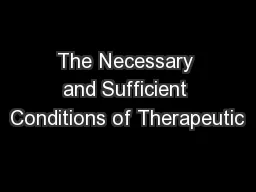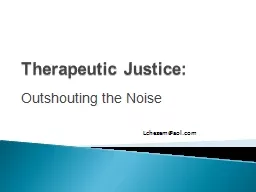PDF-The Necessary and Sufficient Conditions of Therapeutic
Author : natalia-silvester | Published Date : 2015-04-21
University of Chicago Editors Note This article is a reprint of an or iginal work published in 1957 in the Journal of Consulting Psychology Vol 21 pp 95103LEB Received
Presentation Embed Code
Download Presentation
Download Presentation The PPT/PDF document "The Necessary and Sufficient Conditions ..." is the property of its rightful owner. Permission is granted to download and print the materials on this website for personal, non-commercial use only, and to display it on your personal computer provided you do not modify the materials and that you retain all copyright notices contained in the materials. By downloading content from our website, you accept the terms of this agreement.
The Necessary and Sufficient Conditions of Therapeutic: Transcript
Download Rules Of Document
"The Necessary and Sufficient Conditions of Therapeutic"The content belongs to its owner. You may download and print it for personal use, without modification, and keep all copyright notices. By downloading, you agree to these terms.
Related Documents














